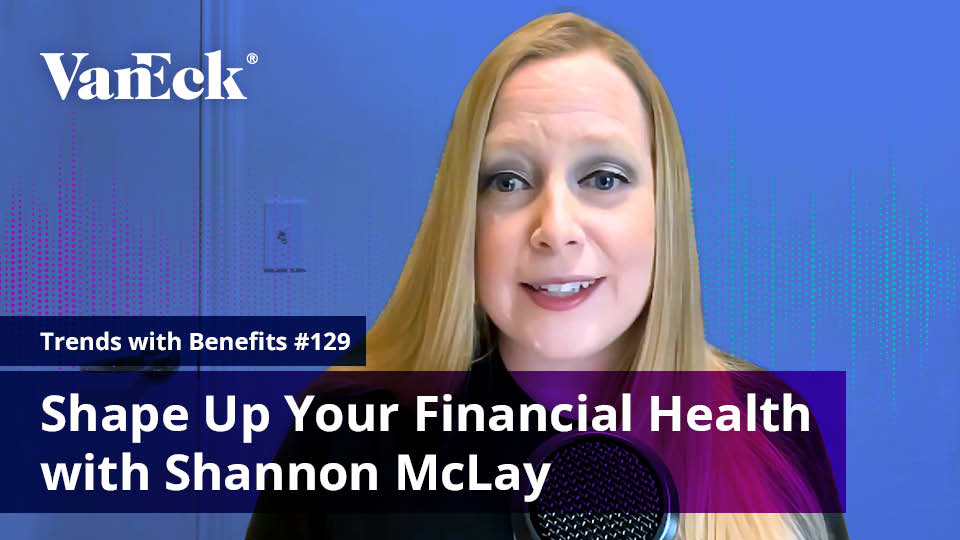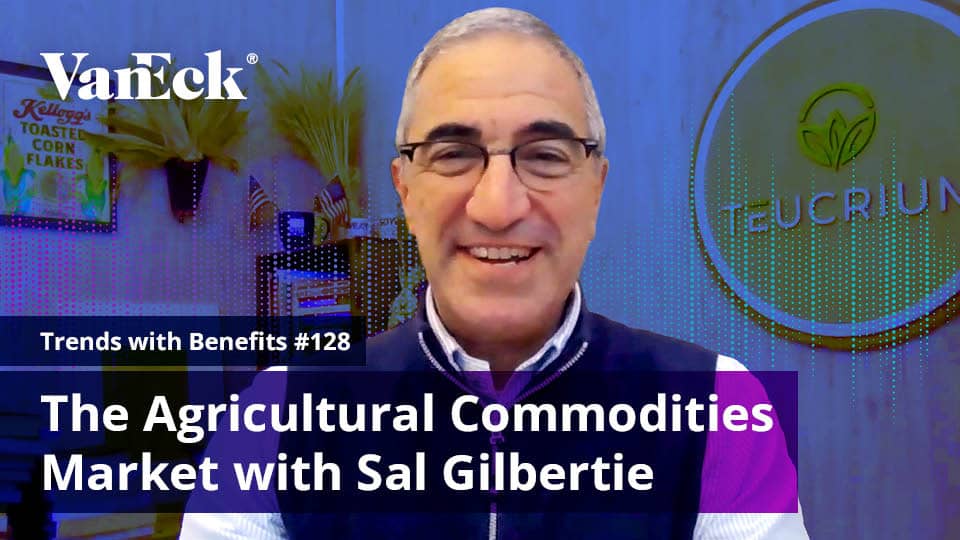Trends with Benefits: How Do You Think About Wealth?
10 March 2020
Trends with Benefits is a podcast by VanEck with a forward-looking perspective. The podcast explores new ways of thinking about the markets, investing, work and life.
How do you think about wealth? Ask yourself that question and consider whether your portfolio is aligned with your answer. In our second episode of Trends with Benefits, I catch up with Steve Blumenthal, Executive Chairman and Chief Investment Officer of CMG Capital Management, at the 2020 Inside ETFs conference and ask him the same question. Our discussion touched on the state of current markets, the “mother of all debt bubbles” and the implications for investor portfolios in the years to come.
Rethinking the Rules of Portfolio Construction
What stood out to me from our discussion is that old rules of thumb about lifecycle portfolio construction have to be rethought. In normal markets, the basic approach is to bias your portfolio to stocks when you are young. Then, as you get older and closer to retirement, you start to shift your portfolio to bonds. Bonds tend to be less volatile than stocks and generally, will give you a better chance protecting the value of the money you’ve accumulated. Plus, the inclusion of bonds is typically intended to provide income during retirement. But, these are not be normal times.
The yield on the 10 year Treasury fell below 1.0% this month and inflation last clocked in at 2.5%.1 A long-term to so-called “risk-free” U.S. bonds is simply eating away future purchasing power. Worse, however, is the risk of rising interest rates. As rates rise, bond prices fall and vice versa. For every percentage point that interest rates rise, U.S. 10-year Treasuries could see price declines of roughly 8%.2 While we don’t seem to be in any danger of seeing interest rates rise in the near future, income investors are in a tough spot. This dynamic has driven many investors into other corners of the bond market, like high yield and emerging market bonds, and into dividend-oriented equity strategies.
Watch for the “Epic Opportunity”
Beyond the typical prescription of asset class diversification for risk management, diversification may also come in the form of types of strategies employed. Steve discusses his use of tactical strategies as one form of risk management. The benefit of such strategies is to allow you to take emotion out of decision making and by using well defined rules, help identify sell and buy opportunities.
Virus fears are dominating financial media currently, but if we get beyond this, there’s still a massive debt bubble to contend with, and according to Steve, there’s an “epic opportunity” around the corner for investors who have defended their wealth.
Related Insights
IMPORTANT DEFINITIONS & DISCLOSURES
This material may only be used outside of the United States.
This is not an offer to buy or sell, or a recommendation of any offer to buy or sell any of the securities mentioned herein. Fund holdings will vary. For a complete list of holdings in VanEck Mutual Funds and VanEck Vectors ETFs, please visit our website at www.vaneck.com.
The information presented does not involve the rendering of personalized investment, financial, legal, or tax advice. Certain statements contained herein may constitute projections, forecasts and other forward looking statements, which do not reflect actual results. Information provided by third-party sources are believed to be reliable and have not been independently verified for accuracy or completeness and cannot be guaranteed. Any opinions, projections, forecasts, and forward-looking statements presented herein are valid as of the date of this communication and are subject to change without notice. The information herein represents the opinion of the author(s), but not necessarily those of VanEck.
The views contained herein are not to be taken as advice or a recommendation to buy or sell any investment in any jurisdiction, nor is it a commitment from Van Eck Associates Corporation or its subsidiaries to participate in any transactions in any companies mentioned herein. This content is published in the United States. Investors are subject to securities and tax regulations within their applicable jurisdictions that are not addressed herein.
All investing is subject to risk, including the possible loss of the money you invest. As with any investment strategy, there is no guarantee that investment objectives will be met and investors may lose money. Diversification does not ensure a profit or protect against a loss in a declining market. Past performance is no guarantee of future results.
Related Insights
03 February 2025
Trends with Benefits #130: How Tech and Consolidation Are Reshaping the RIA Industry with Eric Flynn
21 January 2025
06 January 2025
03 December 2024




